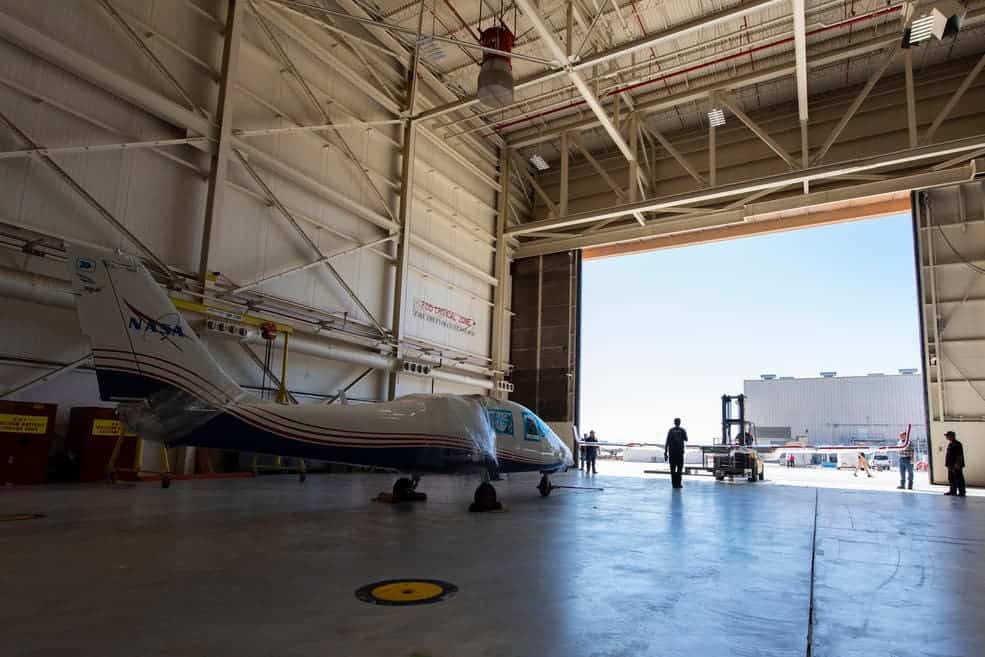This week, NASA received its first all-electric experimental aircraft at the space agency’s Armstrong Flight Research Center in Edwards, California. The X-57 Maxwell, where “X” stands for experimental, will be the first X-class aircraft NASA has flown with a crew in two decades.

The air travel industry is thought to be responsible for 900 million metric tons of CO2 emissions a year. The industry has pledged to reduce aircraft emissions in half by 2050 compared to 2005 levels but how could that realistically ever happen considering how the rate of air travel is surging? Around the world, airlines carried 4.3 billion passengers in 2018, an increase of 38 million compared to the year before.
Our only chance of drastically reducing air travel emissions isn’t only to fly less but to radically alter how aircraft are powered. And, this is where efforts such as NASA’s new experimental aircraft come in.
The X-57, which is at its second iteration (Modification II or Mod II), arrived from San Luis Obispo, California, where it was being built by Empirical Systems Aerospace Inc.
It was built on the backbone of the Tecnam P2006T, a twin-engine aircraft popular among private aviators. The two internal combustion engines were replaced with 14 electric motors. Batteries and electronics required for an all-electric aircraft were also fitted in this second version.
Now, NASA engineers are ready to begin testing the aircraft, gearing up for a manned test — the first in two decades for an experimental NASA aircraft.
Before it will be operated by a crew, however, NASA wants to complete Mods III and IV, which will involve first aircraft development, including work on the wings.
The ultimate goal is to develop certification standards for emerging electric aircraft markets, including urban air mobility vehicles. In other words, the lessons learned by NASA will be shared with the broader aviation industry in order to accelerate the development of zero-emission aircraft.
“The X-57 Mod II aircraft delivery to NASA is a significant event, marking the beginning of a new phase in this exciting electric X-plane project,” said X-57 Project Manager Tom Rigney. “With the aircraft in our possession, the X-57 team will soon conduct extensive ground testing of the integrated electric propulsion system to ensure the aircraft is airworthy. We plan to rapidly share valuable lessons learned along the way as we progress toward flight testing, helping to inform the growing electric aircraft market.”
Some companies are already on track to develop their own zero-emission aircraft. Eviation, for instance, is a startup that designing 100% battery-electric planes, while ZeroAvia has developed a hydrogen-powered airplane with a 500-mile range.


